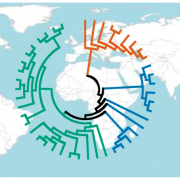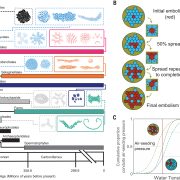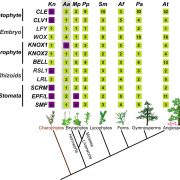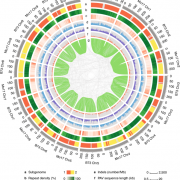Convergent evolution in pitcher plant traps reveals a mechanism for composite trait evolution
It’s easy for most of us to grasp how an enzyme evolves new functions or substrate specificities, but envisioning how something incredibly complex like the human eye can be quite challenging (even Darwin was stumped). In this fascinating paper, Chomicki et al. asked how two geographically separated carnivorous pitcher plants evolved the same complex trap mechanism, which in part addresses this conundrum. Specifically, they looked at Nepenthes gracilis and Nepenthes pervillei, both of which use a springboard mechanism to trap insects. The trap requires three components, each useless without the other two: a horizontal lid that hovers above the pitcher, a slippery but not too-slippery surface on the underside of the lid, and a hinge on the lid that, when hit by rain, shakes the insects into the trap (see video). A phylogenetic analysis ruled out a single evolutionary origin for the trap mechanism, indicating that they are the product of convergent evolution. The three traits show independent evolution, indicating that the complex trait is a result of “spontaneous coincidence” in which the chance occurrence of the three traits provides a selective advantage that becomes fixed. This article is accompanied by another example of complex trait evolution (in snails) and a related perspective. (Summary by Mary Williams @PlantTeaching) Science 10.1126/science.ade0529. (Perspective article 10.1126/science.adm9239).









